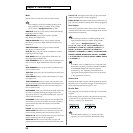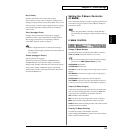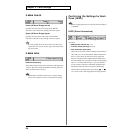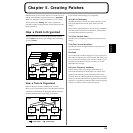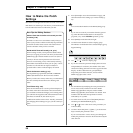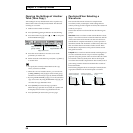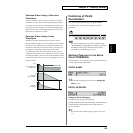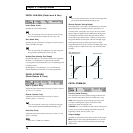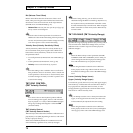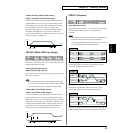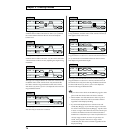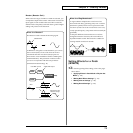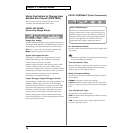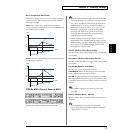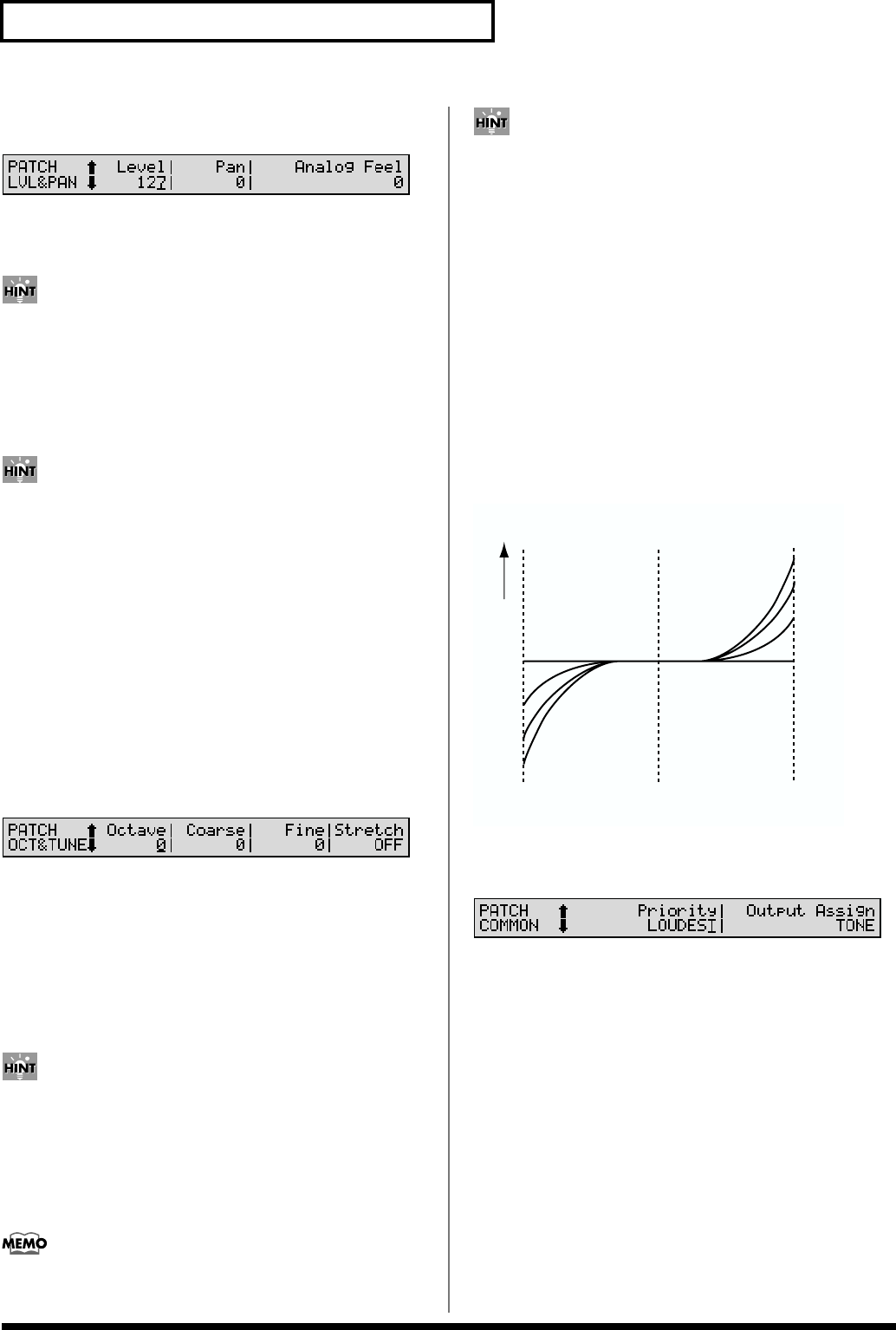
70
Chapter 5. Creating Patches
PATCH LVL&PAN (Patch level & Pan)
fig.05-09
Level (Patch Level)
Specifies the volume of the Patch.
You can specify the level of each Tone in a Patch using
the Level parameter (PATCH/TVA/TVA) (p. 90).
Pan (Patch Pan)
Specifies the pan of the Patch. A setting of L64 is far left, 0 is
center, and 63R is far right.
You can specify the pan setting for each Tone using the
Pan parameter (PATCH/TVA/TVA) (p. 90).
Analog Feel (Analog Feel Depth)
Specifies the depth of 1/f modulation that is to be applied to
the Patch. (1/f modulation is a pleasant and naturally-
occurring ratio of modulation that occurs in a babbling brook
or rustling wind.)
By adding this “1/f modulation,” you can simulate the
natural instability characteristic of an analog synthesizer.
PATCH OCT&TUNE
(Patch Octave & Tune)
fig.05-10
Octave (Octave Shift)
Adjusts the pitch of the Patch’s sound up or down in units of
an octave (+/-3 octaves).
Coarse (Coarse Tune)
Adjusts the pitch of the Patch’s sound up or down in
semitone steps (+/-4 octaves).
You can specify the coarse tune of each Tone using the
Coarse parameter (PATCH/PITCH/PITCH) (p. 86).
Fine (Fine Tune)
Adjusts the pitch of the Patch’s sound up or down in 1-cent
steps (+/-50 cents).
One cent is 1/100th of a semitone.
You can specify the fine tune of each Tone using the Fine
parameter (PATCH/PITCH/PITCH) (p. 86).
Stretch (Stretch Tuning Depth)
This setting allows you to apply “stretched tuning” to the Patch.
(Stretched tuning is a system by which acoustic pianos are
normally tuned, causing the lower range to be lower and the
higher range to be higher than the mathematical tuning ratios
would otherwise dictate.) With a setting of OFF, the Patch’s
tuning will be equal temperament. A setting of 3 will produce
the greatest difference in the pitch of the low and high ranges.
The diagram shows the pitch change relative to equal
temperament that will occur in the low and high ranges. This
setting will have a subtle effect on the way in which chords
resonate.
fig.05-11.e
PATCH COMMON
fig.05-12
Priority (Voice Priority)
This determines how notes will be managed when the XV-
88’s maximum polyphony limit is exceeded (128 voices).
LAST: The last-played voices will be given priority, and
currently sounding notes will be turned off in order,
beginning with the first-played note.
LOUDEST: The voices with the loudest volume will be given
priority, and currently sounding notes will be turned off,
beginning with the lowest-volume voice.
Output Assign
Specifies for each Patch how the direct sound will be output.
MFX: Output in stereo through Multi-Effects. You can also
apply Chorus or Reverb to the sound that passes through
Multi-effects.
1
2
3
OFF
2
1
OFF
3
High note range
Pitch difference from
equal temperament
Parameter value
Low note range



